INTRODUCTION:
Cryptorchidism, also known as undescended testis, is one of the most frequently occurring anomalies seen in boys, affecting about 1 in 20 males. Testicular descent may occur within 10-12 weeks after birth, beyond which spontaneous descent is rare1. The anomaly occurs either due to alterations in the hormonal control or in the anatomical process of testicular descent.2
Cryptorchidism can be congenital or acquired in nature. Acquired or False or Pseudo-cryptorchidism is due to reflex contraction of cremasteric muscles that cause retraction of the testis. This reflex is weak or absent at the time of birth, and slowly becomes more active. It is completely developed by the age of 5-10 years.1
The treatment and management depend on the cause. The hCG (Human chorionic gonadotropin) and GnRH (gonadotropin releasing hormone) therapy are used in cryptorchidism due to deficiency in the HPA axis. Surgical treatment is mainly used to prevent secondary testicular degeneration by high temperature of the abdomen3.
Pseudo-cryptorchidism may resolve spontaneously or require surgical intervention. Studies report testicular atrophy in 2-5% of cases that undergo orchiopexy and may further lead to infertility and carcinoma.4 Undescended testis has been reported as a risk factor for testicular infarction in children undergoing inguinal hernia repair due to the lack of collateral blood flow. This finding is likely a factor that causes a higher incidence of testicular atrophy in cases that undergo orchiopexy5.
CASE REPORT:
A 6.5-year-old boy underwent orchiopexy for false-cryptorchidism in right testes, after which the parent of the patient noticed that his right testes was smaller than the other. He was cured with the aid of individualized classical homeopathic treatment.
The initial consultation took place on March 1, 2016.
The child was a known case of false cryptorchidism of the right testes since birth and was under the regular observation of the surgeon. He was advised human chorionic gonadotropin (hCG) treatment, that was declined by the parents.
When he was 6-years-old, the boy accidentally fell and injured his lower abdomen and developed a tumor like protrusion in the right iliac region which was diagnosed as inguinal hernia. The surgeon recommended to conduct orchiopexy.
The surgery was successfully conducted in November 2014, and he had no post-operative complications. One year later, the mother realized that the child’s right testes felt smaller than the left. After an examination by the surgeon and ultra-sonographic investigation, he was diagnosed with Hypoplasia of the right testicle. Hormonal therapy was suggested, which the mother refused due to the fear of complications and she opted for homeopathic treatment.
Past history:
- 3 months old – Acute Respiratory Viral Infection (ARVI) without fever, Rx: Sinecod, Lasolvan.
- 7 months old – Cold without fever.
- 5 years old – Recurrent otitis with fever, Rx: anti-inflammatory ear-drops, anti-bacterial nose-drops
- 2-3 years old – Recurrent ARVI (4 times a year) with fevers of 38-38.3°C, followed by cold and coryza (up to 1-1.5 months). Rx: Multiple courses of Antibacterial drugs.
Family history:
- Maternal great-grandmother: Asthma, infarcts.
- Maternal grandfather: Allergy
- Paternal great-grandmother: Infarcts
- Paternal great-grandfather: Throat cancer
- Parents: No apparent chronic pathology
Gestational events: The mother suffered from slight toxicosis in the first trimester of the pregnancy, and the whole pregnancy was accompanied by Candidal colpitis. One week before the delivery, the colpitis was treated with special antifungal preparations in suppositories. The baby was delivered through a scheduled cesarean section with epidural anesthesia at 38 weeks. The American Pediatric Gross Assessment Record (APGAR) score of the baby was 8-9, and the developments were in accordance with age.
The presenting symptoms available for homeopathic repertorisation were:
- Hypoplasia of the right test-icle (3)
- very timid (3), shy, sensitive and easily impressed (2), weepy (2)
- overly dependent on the mother
- Rare outbursts of anger on contradiction. Obstinate. Can hit his brother if contradicted
- The boy startles from loud noises (2).
- Chilly (2), hands and feet are constantly cold (2)
- Uncovers himself during the night, perspiration observed in head (2)
- The child falls asleep in a knee-elbow position (3). He sleeps in a twisted (bent) position – the mother says that he sleeps like a hook.
- Desires: macaroni (3), sausages (3) and smoked sausage (3), eggs (2), sweets (2), Likes only green apples and mandarins
- Aversion: Potatoes (3), jelly (2)
Physical examination:
- The eyelids are slightly swollen (1).
- Posterior cervical lymph nodes (1 cm in diameter) and submaxillary lymph nodes and anterior cervical lymph nodes (1 – 1.3 cm in diameter) are palpable, dense and movable. The submaxillary lymph nodes are sensitive when palpated (1).
- During examination, the boy had coryza and the skin around nose was macerated.
- The tonsils are hypertrophied (2-3 degree), not coated. The tongue is moist, slightly coated, the color of the coating is white.
- The genital organs are formed in accordance with the male type. The testicles are in the scrotum. The left test-icle is 2x1x1 cm, the right one is 1×0.5×0.5 cm.
- Ultrasonography results: Hypoplasia of the right testicle.
Table 1: Repertorisation of symptoms presented on March 1, 2016:
| SYMPTOMS | ||
| MENTAL/EMOTIONAL | PHYSICAL | GENERALITIES |
| · MIND- TIMIDITY+++
· MIND- CLINGING-children, in mother, child cling to the + · MIND- WEEPING- tearful mood, etc ++ · MIND- ANGER, irascibility – contradiction from + · MIND – OBSTINATE – children + · MIND- STARTING, startling- noise, from++ |
· GENITALIA-MALE – RETRACTION –Testes+++
· EXTREMITIES – COLDNESS ++ · HEAD – PERSPIRATION- Scalp – sleep, during · EYE – SWOLLEN – lids+ · FACE – SWELLIG – submaxillary glands+ · EXTERNAL THROAT – SWELLING – Cervical glands+ · THROAT – INDURATION of tonsils+ · MOUTH – DISCOLOURATION – Tongue – white + |
· GENERALITY – FOOD and DRINKS – pasta – desire
· GENERALITY – FOOD and DRINKS – sausages – desire · GENERALITY – FOOD and DRINKS – eggs- desire · GENERALITY – FOOD and DRINKS – potatoes – aversion |
Figure 1:
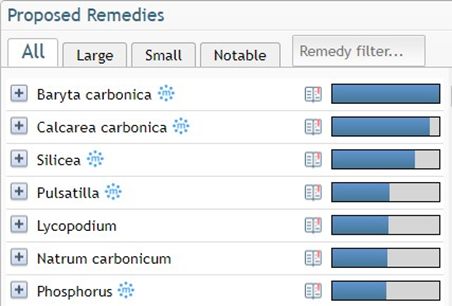
Figure 1: Proposed remedies based on symptoms from table 1
Level of Health: At the time of the initial visit, the boy had prolonged acute respiratory viral infections, which lasted from 1 to 1.5 months, a history of recurrent otitis media and mental and emotional symptoms that significantly hampered the child’s socialization.
All this testified to the reduced work of the defense mechanism. But acute conditions proceeded with fever up to 38.3 oC and at the initial consultation, the picture of the drug was clearly visible (Baryta carbonica). Subsequently, the reaction to the drug showed that the child was at the time of the initial treatment in high levels of health (level 4-5).
Prescription: Baryta carbonica 30CH, every two weeks.
(Timidity, strong attachment to the mother, frequent and long-lasting colds, enlargement of the tonsils and lymph nodes, Testicular hypoplasia were prominent symptoms).
| DATE | OBSERVATION | INTERVENTION |
| 28 March, 2016 | During the first week after the remedy, the patient slept in a better relaxed position.
After the second dose of remedy on 14 March 2016, the patient developed an acute with fever over 39°C and coryza. The mother administered antipyretic medicines after which the fever did not rise again. Coryza lasted for two weeks.
Character of acute: coryza green-yellow color, profuse viscid discharge; was accompanied by a headache, pain when pressure was applied to the zygomatic bones in the area of the projection of the maxillary sinuses. (Proposed remedies: Figure 2) |
Rx:
Kali-bichromicum 12CH TID |
| 11 April 2016 | One day after Kali bichromicum, the nasal discharges decreased. It was easier to blow the nose. Headache subsided. The coryza became transparent and decreased in quantity.
Prolonged nasal discharges for two weeks with pain at the root of the nose. Chilliness increased. coldness of the extremities with the marble discoloration of the skin. Aversion to potatoes persist. (Proposed remedies: Figure ) |
Rx:
Thuja occidentalis 30 CH, single dose. |
| 13 April 2016 | Coryza ceased. | Nil |
| September 2016 | The teachers of the boy confirmed that he is sociable, makes friends easily and studies well unlike how he was earlier – Timid, weeping and unsociable. | Nil
|
| November 2016 | During physical examination, the surgeon concluded that both testes of the patient were of same size, which was later confirmed with the aid of Ultra-sonographic investigation. | Nil |
| 20 January 2017 | ARVI with fever since 2 days, the mother administered antipyretic remedies after which the fever subsided but the patient developed cough.
Character of cough: dry, persistent, aggravated from 1 to 2 am. Cough aggravated on lying flat; he coughed till he vomited. Cough ameliorated by vomiting. The boy had become restless and was constantly fiddling and had to move constantly. Excoriating discharge from the nose. Fastidious: does not touch any surface by hand as he thinks it will become dirty. Desire for warm drinks; drinks by small portions. He is chilly ++ Perspiration mostly at night: on occiput and hairy parts of head. Fear of darkness ++; fear of flying planes ++ Fear of suffering, as he thought it accompanies death. Desire: Salty food (dried fish, salted cucumbers, olives, dried salami) +++ Desire – Soft-boiled eggs (2), pastry (biscuits, dry bagels, bread) (3), Desire – Sweets (lollipops, chocolate candies) ++ Sour fruits ++ Aversion: Potatoes, jellies. On examination, the cervical and accessory lymph nodes were elastic and painless, and the sizes were up to 1cm in diameter. The tonsils were enlarged (2nd degree) and not coated. (Proposed remedies: Figure 4) |
Rx:
Arsenicum album 30 CH; Single dose. |
| 21 January 2017 | Cough had decreased in the night; the patient did not vomit due to cough anymore. Cough is absent during the day. | Nil |
| July 25 2017 | No complaints. The boy is free, active, sociable and has no fears.
He did not contract the adenoviral infection that he was exposed to from his sibling. |
Nil |
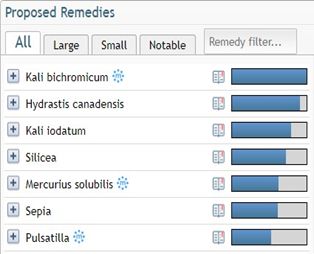
Figure 2: Proposed remedies for follow up on 28 March, 2016.
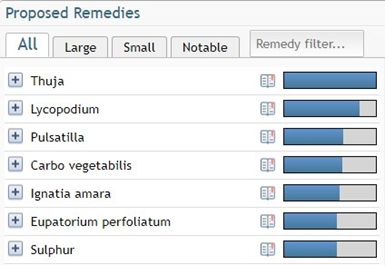
Figure 3: Proposed remedies for follow up on 11 April 2016
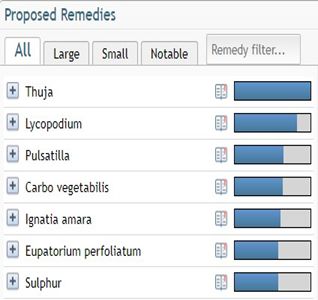
Figure 4: Proposed remedies for follow up on 20 January 2017
OUTCOME:
The patient who initially underwent orchiopexy for his false cryptorchidism of right testes, later developed testicular hypoplasia. On detailed observation by the Homeopath, it was noticed that the suffering went beyond the physical plane alone, and the boy had underlying mental and emotional barriers like timidity, reserved and introverted nature and excessive clinging to his mother. He also had recurrent acutes that lasted for 1 – 1.5 months.
In the due course of treatment, the boy was cured of not only testicular hypoplasia but also the said mental and emotional symptoms and was able to socialize easily. The natures of his acute illnesses also improved, and they lasted for shorter durations. By the end of the treatment period, he was symptom free and healthy. This also indicates an improvement in the level of his health.
DISCUSSION:
Classical Homeopathy approaches with a holistic perspective of the diseased individuals.6 The understanding of predisposition, stress, past inflammatory and non-inflammatory sufferings are incorporated into treating the patient7, which is better explained with The “continuum” of a unified theory of diseases. 8
The therapeutic approach is then adapted to understand uniqueness of the symptoms exhibited and strengthening the immune system to help cure the disease condition. This approach results in the overall improvement of the health condition which is evident in the betterment of comorbidities and the appearance of lesser severe and easily resolvable diseases.
In this case, the level of health was good considering the patient’s history of recurrent acutes9 that was treated with multiple courses of antibacterial drugs. The acute ARVIs treated with antibacterial drugs lasted for 1 – 1.5 months, whereas the ARVIs in the course of homeopathic therapy were less severe and easily resolved and did not compromise the immune system of the patient. By treating the case with remedies then indicated, the patient was able to recover from all symptoms in his mental, emotional and physical planes.
CONCLUSION:
Individualized classical homeopathic treatment provides a better alternative to surgical and hormonal intervention in the treatment of testicular hypoplasia. Further studies are required to evaluate the extent of usefulness in treating such cases.
BIBLIOGRAPHY:
- Hutson JM. Cryptorchidism and Hypospadias. Endotext. July 2018. https://www.ncbi.nlm.nih.gov/books/NBK279106/. Accessed August 22, 2021.
- Hutson JM, Hasthorpe S, Heyns CF. Anatomical and Functional Aspects of Testicular Descent and Cryptorchidism. Endocr Rev. 1997;18(2):259-280. doi:10.1210/EDRV.18.2.0298
- R M, PJ F, P V, J G, J M, S J. Increase in testicular temperature in case of cryptorchidism in boys. Fertil Steril. 1993;59(6):1319-1321. doi:10.1016/S0015-0282(16)55999-8
- J D, N J, D B, et al. Testicular atrophy following paediatric primary orchidopexy: A prospective study. J Pediatr Urol. 2016;12(4):243.e1-243.e4. doi:10.1016/J.JPUROL.2016.05.023
- Sonderman KA, Wolf LL, Armstrong LB, et al. Testicular atrophy following inguinal hernia repair in children. 1:3. doi:10.1007/s00383-018-4255-z
- Mahesh S, Mallappa M, Tsintzas D, Vithoulkas G. Homeopathic Treatment of Vitiligo: A Report of Fourteen Cases. Am J Case Rep. 2017;18:1276. doi:10.12659/AJCR.905340
- Mahesh S, Denisova T, Gerasimova L, Pakhmutova N, Mallappa M, Vithoulkas G. Multimorbidity After Surgical Menopause Treated with Individualized Classical Homeopathy: A Case Report. Clin Med Insights Case Rep. 2020;13. doi:10.1177/1179547620965560
- G V, S C. The “continuum” of a unified theory of diseases. Med Sci Monit. 2010;16(2). https://pubmed.ncbi.nlm.nih.gov/20110932/. Accessed August 22, 2021.
- Vithoulkas G. Vithoulkas: Levels of Health. The Second Volume of … – Google Scholar. https://scholar.google.com/scholar?q=related:Px34TwTitN4J:scholar.google.com/&scioq=&hl=en&as_sdt=0,5. Accessed August 22, 2021.




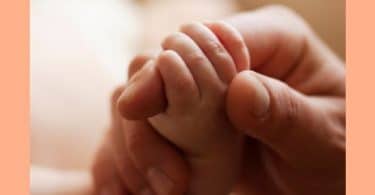
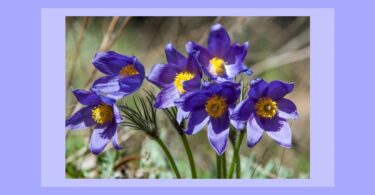

Best Research in Individualized Classical Homoeopathic Treatment. Having great Camand in Case Taking & Repertorization. I Appreciate her efferts as a Homoeopathic Practicener.